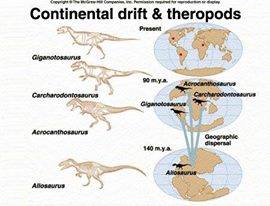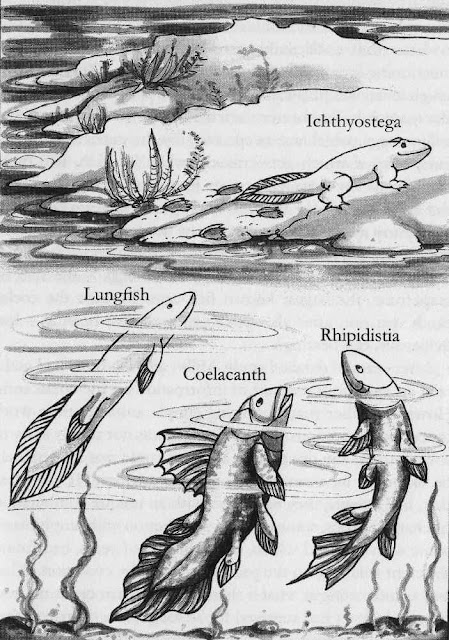In search of planet nine......

It is a common belief that all planets, including the Sun, were formed some forty-five million years ago, from a circumstellar disk of dust which was rotating in the outer space.
It is believed, in particular, that Sun came into being from the massive centre part of the disk of dust and other planets were formed when the flat periphery of the disk accumulated here and there.
On the basis of this theory, it was generally expected that all the other planets should be revolving around the Sun in the same plane in which the Sun is rotating in its axis.
At this point, it was discovered that the Sun was rotating with a six-degree inclination.
But, Professor Dr. Konstantin Batygin, Dr. Michael Brown and their under-graduate student Ms. Elizabeth Bailey offered a new theory that the Sun is not six-degree inclined, but on the contrary, only the orbital plane of the other planets is inclined to the extent of six degrees.
However, the fact remains that all the planets are orbiting the Sun at different angles.
Dr. Michael Brown states that the gravitational force of a yet-to-be-discovered planet which is orbiting the Sun on the outer rim of the solar system, even farther away from Pluto, is the reason for the planets revolving around the Sun in an inclined plane.
Particularly, this planet, which is called “planet nine”, is believed to be four times larger than the earth and at the same time weigh ten times more than the earth itself. This has been estimated by computer models created by Dr. Michael’s team.
Moreover, Dr. Michael has said that the orbital path of this planet would have inclined from the orbital plane of the other planets and set at an angle of thirty degrees.
To sum up, as per the Disk of Dust Theory, it is considered that there is absolutely no possibility of the formation of a large planet beyond Neptune.
Thus, when a question arose as to how planet nine came into being in the far outer Solar System, Dr. Michael suggested that it might have been formed at the inner regeion of the Solar System and later ejected to its present location by Jupiter.
Again, when a question was raised as to how a planet that is ten times heavier than the earth could curve the orbital path of the other planets, especially when Jupiter is three hundred times and Saturn is ninety-five times heavier than the earth, Dr. Michael Brown offered an explanation that since the orbital path of the planet in question is very big, it is able to curve the orbital plane of the other planets.
At this juncture, six minor planets, similar to Pluto, were discovered beyond Neptune.
Moreover, it has been found out through the computers that the orbital path of these minor planets was also set at a thirty-degree angle from the common orbital plane of the other planets.
Dr. Michael Brown has reiterated that the gravitational force of Planet Nine is the reason for the orbital path of these minor planets being set at a thirty-degree angle from the common orbital plane of the other planets.
Similarly, Scott S. Sheppard of the University of Carnegie, Washington, discovered a minor planet which was orbiting the Sun even farther away from Neptune.
Scott S. Sheppard suggested that the gravitational force of Planet Nine was the reason for the orbital path of this minor planet being inclined.
On the basis of this finding, he expressed his hope of the existence of Planet Nine with a ninety-percent probability.
While expressing his opinion about this theory, J.J. Kavelaars, a scientist in the astronomical research centre of Canada, has stated that there is only one percent possibility for the existence of Planet Nine.
In a desperate look out for Planet Nine, Dr. Michael Brown and Dr.Sheppard along with their teams searched with the state-of-the-art telescopes in the direction where this planet is believed to be existing.
But, despite searching in a very vast area, the planet could not be discovered.
However, Dr. Michael Brown has expressed hope that there is still a ten-percent possibility for discovering this evasive planet.
Why the orbital path of the minor planets is more inclined from that of the other planets?
I had already stated that the forward movement of the Sun is the main reason for the tilt in the orbital path of the planets revolving around the Sun in a sixty-degree angle.
I had also explained with an illustration that if crows (planets) start circling a giant-sized yellow balloon (Sun) moving slowly in the sky, in an upward-downward motion, the circling path of the crows (planets) will be inclined towards the direction in which the balloon (Sun) moves.
At this point, in case some crows circle the same yellow balloon from a long distance in a circular path, how would the circular path of these crows be?
The circular path of these crows will be highly elongated and will be more deviated from the circling plane of the inner ring crows.
In a similar way, the orbiting path of the minor planets revolving around the Sun from a long distance will be more deviated from the orbiting plane of the other inner planets.
Scientists firmly believed that a planet with a size similar to that of Neptune, existed at the periphery of the Solar System.
However, a study conducted in March, 2014 with NASA’s Infra-Red Rays Telescope, ruled out the existence of such a planet.
NASA has declared that there is absolutely no possibility of such a planet existing at a distance of ten thousand astronomical units (one astronomical unit is the distance between the Sun and the earth, i.e., one hundred and fifty million kilometres) from the Sun, that is similar to the size of Saturn which is ninety-five times larger than the earth.
Similarly, NASA has also declared that no planet similar to the size of Jupiter, i.e., three hundred and eighteen times larger than the earth, exists at a distance of twenty-six thousand astronomical units from the Sun.
https://en.wikipedia.org/wiki/Planet_Nine
0000000
''But there is a possibility that Planet Nine doesn't exist and that some other explanation accounts for the motion of objects that astronomers observe in the Kuiper Belt. Whatever the outcome, Green said, the general public will have "a front row seat" for the show-Jim Green Director of Planetary Science - NASA
http://www.space.com/31746-planet-nine-prediction-nasa-caution.html




Comments